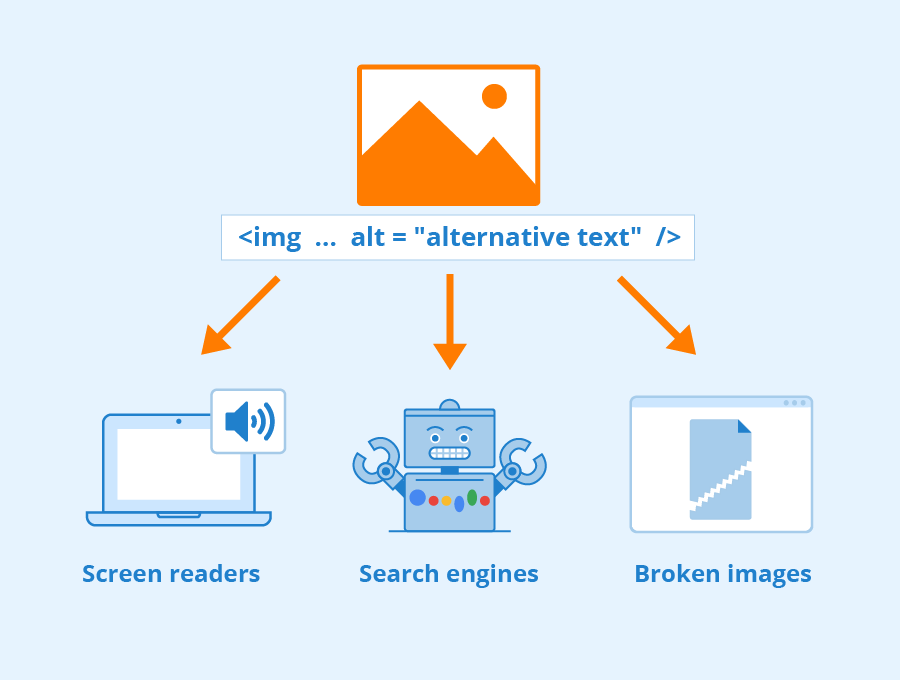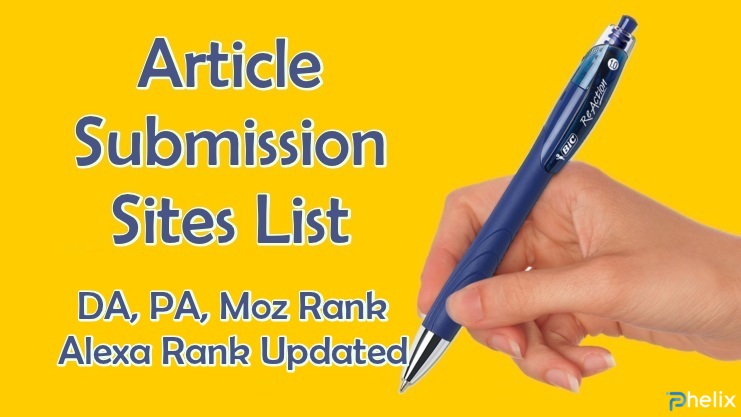20 May

|
Getting your Trinity Audio player ready...
|
Blogging is a great way to build authority and drive organic traffic. But getting good search engine results is not a piece of cake.
Many blogs will guide the readers on what it takes to optimize a blog post for search engines. So, let’s cover the gist of all those guides by discussing a comprehensive guide on how to optimize your blog content for SEO. With this information, a beginner or advanced blogger should be well on his way to ranking higher in search engines for the keywords that matter to him.
Table of Contents
What is Blog Optimization?
Blog optimization means fulfilling the SEO criteria for a blog to achieve a higher or top rank in SERPs (Search Engine Result Pages).
Why are Blogs Good for SEO?
The sole purpose of creating a blog is to answer users’ queries related to a website’s services. So, good blogs prove pretty beneficial for the overall SEO rating of a website because a blog with better on-page SEO tactics has a better chance of ranking higher in SERPs than others. And higher SERP ranking means attracting more visitors to the root (main) website.
How to Optimize Your Blog Content for SEO? – The 10 Key Items to Consider for Writing an SEO Optimized Content:
1. Determine the target audience of your blog:
If a blogger doesn’t know his target audience, he won’t have a blog strategy, which means his blog won’t have a set direction. So, developing and understanding a blog strategy should be the priority of every blogger for the SEO optimization of his blog content. The only way to create a blog strategy is by understanding the primary audience. But once a blogger has understood his blog strategy, he will know what he wants from his audience when they click on his blog.
A blogger should address his audience personally because speaking on a personal level is more beneficial for SEO optimization rather than entirely focusing on creating grammatically accurate content. So, a blogger can take help from buyer personas to understand his target audience and address them personally.
2. Strategically use the semantic keywords throughout the blog post:
Once a blogger has developed a blog strategy and determined his primary audience, the next step in the “how to optimize blog posts for SEO” guide is to perform keyword research.
Keyword research means identifying the topics for a blog and finding related (LSI) keywords regarding each topic. A blogger should choose high-volume and low-competition keywords for his blog topics because this will give him a better chance to rank his blog higher in search engines for those keywords (search terms). But finding low-competition and high-volume keywords is challenging. Therefore, bloggers should use SEO blog optimization tools, like ‘SEMrush.’

On the other hand, LSI (Latent Semantic Indexing) keywords give a better SEO optimization chance because these are related to the blog’s main (focus) keyword. So, a blogger needs to include as many LSI keywords as possible to have a better chance of higher ranking in search engines. But this doesn’t mean stuffing the blog with LSI keywords because search engines are now advanced enough to eliminate the content that contains keyword stuffing. Thus, a blogger can use Google’s search suggestions appearing at the bottom of each page to find the related keywords to his search query.

3. Understand the importance of long-tail keywords:
As mentioned earlier, modern SEO is not about stuffing the blog with a maximum number of keywords. Instead, it focuses on whether a blog answers users’ intent or not. So, for that, bloggers should also focus on using 1-2 long-tail keywords.
As the name depicts, Long-tail keywords are generally longer than LSI keywords. However, long-tail keywords answer the user’s intent better because they are more specific. Plus, their search volume is low, but they have a higher conversion rate. So, they will effectively help convert a blog’s visitors to regular readers, which is the organic traffic every blogger wants.
4. Write appealing blog titles:

The fourth technique in the “how to optimize your blog content for SEO” guide focuses on creating eye-catchy blog titles.
When a reader searches his topic on search engines, he filters out the relevant blogs related to his search query based on relevant blog titles. So, a blog title plays an essential role in increasing the click-through rate of a blog. That is why a blogger should use the focus (main) keyword of his blog in the headline to fulfill the purpose of SEO.
The ideal length of a blog title is 60 characters (equivalent to 8-12 words). But bloggers and writers can use automated tools to determine the headline score of their blogs and improve them accordingly. One such automated tool is the ‘Headline Analyzer from CoSchedule.’

5. Optimize the meta description of your blog:
After the blog title, readers look at the description of the results appearing in SERPs (Search Engine Results Pages) to check whether the blog content is relevant to them or not. In blogging terms, that description is known as meta description.

The meta description is another essential thing to work on to increase the blog’s click-through rate. Bloggers or writers should (naturally) use the blog’s main (focus) keyword in the meta description to fulfill the SEO criteria and get a better ranking in SERPs. But bloggers or writers should write meta descriptions to assist readers instead of bots. So, there should not be any keyword stuffing.
6. Learn the importance of appealing CTAs:
The sixth SEO optimization technique in the SEO for WordPress blog posts and other blog platforms guide is to learn the use of enticing CTA.
CTA stands for Call to Action. A call to action is a technique that paves the readers’ way to the next stage of their blogging journey. So, considering the importance of CTA through its definition, a blog post is useless without an enticing CTA.
Like using keywords, a blogger or writer should use CTA naturally in his blog and it should be relevant. Otherwise, CTA will become useless.
Call To Action (CTA) can be of several types. For example, bloggers can use buttons, hyperlinks, or widgets as a call to action. But irrespective of the kind of CTA, it should look different from the rest of the content. Otherwise, there will be no use in calling the CTA a call to action.
7. Use infographics with alt tags:

All the readers are human beings and human beings can quickly get bored. So, to prevent a reader from getting bored, a blogger or writer should use relevant infographics in his blog.
Search engines give preference to a piece of content that contains relevant and creative infographics. So, bloggers can purchase the license of relevant infographics or create infographics from scratch with the help of tools like ‘AdobeExpress,’ ‘Canva,’ ‘Easel.ly,’ ‘Genial.ly,’ ‘Infogram,’ ‘Piktochart,’ ‘Venngage,’ ‘Snappa’ and ‘Visme.’
Infographics can contain images, videos, charts, or other media types. But irrespective of the kind of infographics, bloggers or writers should use descriptive alt tags along with every media. Doing this will inform the search engine about each visual element. Moreover, it will also improve the blog’s reader experience, which is the next point in this guide.
*** Pro Tip: Using alt tags for visual elements is helpful for visually impaired individuals ***
8. Understand the importance of the reader’s experience:
The eighth technique in the “how to optimize your blog content for SEO” guide is the reader’s experience of the blog.
Undoubtedly, all the aforementioned SEO techniques are necessary to rank higher in search engines to optimize blog content. But a blogger should understand the importance of the reader’s experience. For example, if a particular keyword, CTA, or infographics ruins the blog’s readability, the blogger should remove it and prioritize its readability.
Similarly, a blogger should also focus on creating original and quality content because even a tiny piece of unique information will set a blog apart from its counterparts. So, to check the originality of content, bloggers can check plagiarism free using online tools.
9. Focus on the mobile-friendly aspect of the blog:
An important factor that Google considers is the mobile-friendly aspect of the blog. Ever since Google updated its Penguin algorithm back in 2015, it has prioritized mobile-friendly websites and blogs.
The mobile-friendly aspect of a blog also helps in SEO optimization because when a website designer uses a responsive design for a blog, it allows the blog pages to have only one URL. So, it centralizes the SEO power by stopping the division between separate URLs, which helps Google understand the value of a post and rank it accordingly.
Most users perform search queries on their smartphones because they are easier to access. So, other than the quality of content, Google prioritizes mobiles and computers responsive blogs.
10. Prefer user-friendly and relevant URLs:
Before hitting the publish button, a blogger should determine whether the links he has used in the blog are user-friendly or not. Thus, if the links are irrelevant to a blog post, a blogger should eliminate them and focus on the other aspects of the SEO.
*** Pro Tip: If a blogger has accidentally forgotten to use the focus keyword in the blog URL, he should not edit that URL because editing will reset the entire SEO effort. Instead, the blogger can change the blog title according to the URL ***
Some Tips for the Search Engine Optimization (SEO) of Blog:
Apart from the ten essential on-page SEO for blogger factors, let’s discuss some tips that will help in optimizing the blog content according to SEO standards.
1. Regularly check the SEO metrics:
As mentioned earlier, different SEO tools help users achieve their SEO-related tasks more efficiently. So, whichever SEO tool a blogger or writer chooses, he should regularly check the metrics of that tool even after publishing the content because technology gets updated quickly. Thus, the only way to keep up with the pace of technology is to subscribe to Google’s official blog.
2. Produce an evergreen content:
While researching the content for a blog, bloggers and writers should focus on updated information (only) because an updated piece of content has a better web lifetime than obsolete content in the search engine optimization books.
3. Keep the content updated:
Outdated content is one of the biggest SEO killers because an obsolete piece of information is useless for readers. Thus, if a piece of content is worthless for users, search engines are now advanced enough to eliminate that piece of content automatically.
Takeaway – The Conclusion:
The basic premise of SEO optimization is to apply techniques to ensure that readers can easily find the page’s content by searching for that content. A blogger may have to alter his blog posts’ order, add or remove links to his website, edit or write descriptions and titles, or even add tags to categorize his post pages. If a blogger follows the above-discussed professional SEO procedures and guidelines, he will notice significant gains in his rankings and traffic sooner than he has imagined.


2 Comments